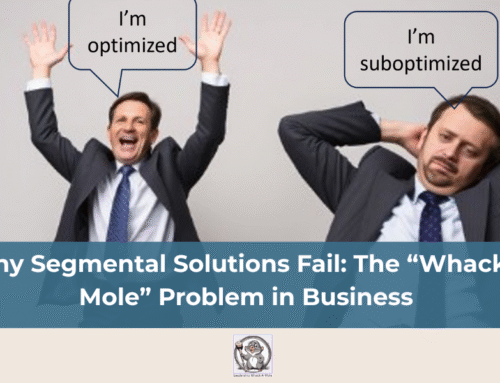
By Jeff Fierstein
As a management consultant, I’ve frequently encountered instances of customer dissatisfaction that were not directly tied to a company’s products or services. In many cases, the root cause stemmed from internal performance issues within the organization.
For example, a manufacturing facility received numerous customer complaints due to delayed order deliveries. The dissatisfaction was not about the product itself, but rather the result of an inefficient manufacturing process that could not meet delivery timelines. From the customer’s perspective, the internal challenges are irrelevant—they expect the product to be delivered as promised. If your organization fails to meet these expectations, rest assured that your competitors are ready to fill the gap.
This scenario underscores a critical leadership responsibility: to establish a structured, objective process for identifying and addressing the root causes of customer dissatisfaction. Without such a framework, businesses risk not only losing clients but also damaging their reputation in the market.
In my experience, the most effective way to ensure consistent customer satisfaction is through process management. A business functions as an interconnected system, where various processes must work in harmony to deliver value to customers. To meet customer expectations, all internal processes must be both optimized and aligned.
Get More Tools From the Resource Bank
Each process in the system produces outputs that must meet specific standards—typically in terms of cost, quality, and schedule. These outputs must be measurable to ensure compliance with those standards. Conceptually, a business operates like an assembly line, with each functional unit passing its output to the next stage in a coordinated sequence. Although the example often originates in manufacturing, the same principles apply across service-based and other non-manufacturing industries.
Functional “Assembly Line” as a Process Flow

The Process Management Method
A structured approach to process management includes the following key steps:
- Identify and quantify customer requirements, focusing on cost, quality, and delivery timelines.
- Map the processes and functions necessary to fulfill those requirements.
- Establish a clear process flow that defines how materials or services move internally between functions.
- Ensure each function’s inputs meet predefined standards for cost, quality, and schedule.
- Develop internal systems for communication, monitoring, and measurement of each function’s inputs and outputs.
- Assess the effectiveness of each function’s output as input for the next stage in the process.
- Identify performance gaps or process variations and implement corrective actions.
- Continuously repeat and refine the process, particularly when customer requirements evolve.
Each function—or department—within an organization contributes to a larger process flow that ultimately culminates in product or service delivery to the customer. Each function receives inputs, transforms them through its unique capabilities, and produces outputs that serve as inputs for the next function in the chain. This creates a system of internal “suppliers” and “customers,” with each function accountable for meeting the needs of the next.
For example, as illustrated in the figure above, the Design department receives customer specifications (channeled through Sales) as input. In turn, the Design team must ensure its output meets internal requirements—such as cost, quality, and schedule—for the Engineering department to proceed effectively. This cascading sequence continues until the final product or service is delivered to the external customer.
By applying disciplined process management principles, organizations can significantly enhance their ability to meet customer expectations consistently, reduce inefficiencies, and remain competitive in their respective markets.
Adapted from: Leadership Whack-A-Mole: Actionable Strategies for Leadership Challenges. (c) 2024 Ric Shriver and Jeff Fierstein. To learn more abut the book, peruse this website or click on the banner above.
We’d love to hear your thoughts and experiences with this topic. Leave a comment below and we’ll respond to you.




